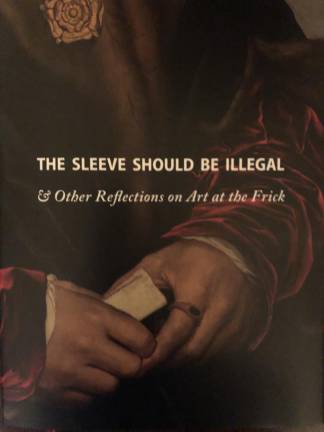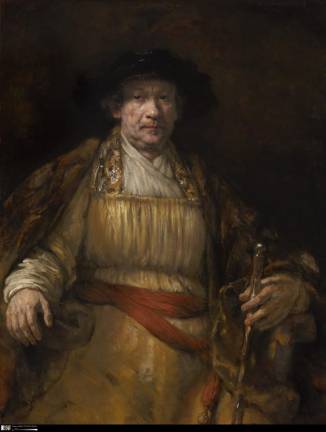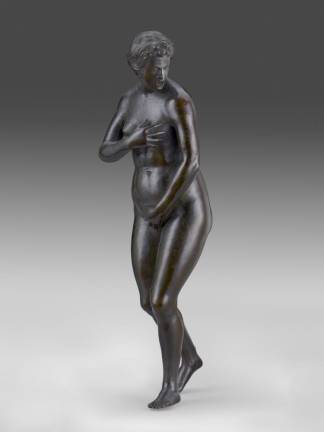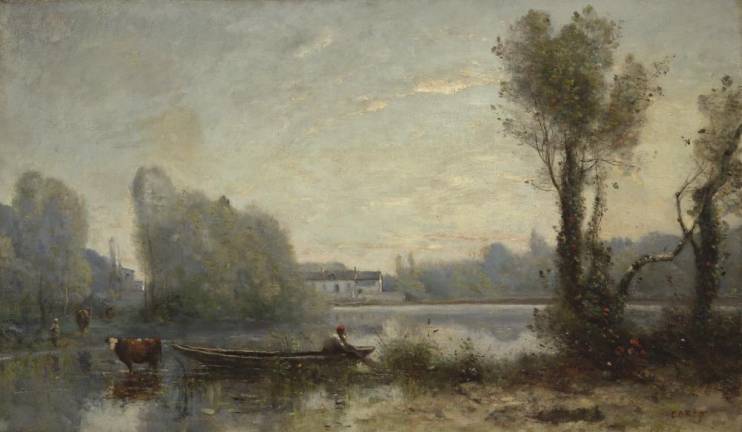On March 18, The Frick Collection will officially open to the public in new, temporary quarters at the Breuer building on 75th Street (“Frick Madison”), while its Gilded Age home on Fifth Avenue undergoes a two-year renovation. It’s been a year since the museum closed its doors, first a casualty of the pandemic, and then of the anticipated move to Marcel Breuer’s Brutalist masterpiece.
As COVID forced cultural activity to pivot online, the Frick rose to the occasion with popular weekly programs like “Travels with a Curator” and “Cocktails with a Curator,” deep dives into singular works in the collection and the artists and locales that shaped them.
As the time draws near to see those works in-real-life again, the museum invited 62 artists, writers, critics and pop culture icons to opine about their favorite pieces in the collection — the ones that got under their skin and made them go back to Mr. Frick’s house again, again and again to soak up their essence — and published their musings in the walkup to the opening of Frick Madison.
Think of this volume as a primer of sorts, a way to pre-game the big day in March. It’s a chance to get up close and personal with the Old Masters and notable successors before you experience them anew, on three floors, in the modernist environs of the Breuer.
On the other hand, if you are one of those New Yorkers who still feel squeamish about indoor activities and may not venture to the Frick’s new quarters any time soon — with or without the vaccine — this book is for you. It fixes the memory of the paintings, the sculptures and those gorgeous Meissen porcelains until you meet them again.
The roster of contributors is a riot of bold-faced names, mostly from the art, music and literary worlds — André Aciman, Adam Gopnik, Roz Chast, Simon Schama, Lena Dunham, Jed Perl, Jonathan Lethem, Wangechi Mutu, Edmund de Waal, Mark Morris, Bryan Ferry, Agnes Gund, Nico Muhly, Vik Muniz and more. They bring critical analysis to their chosen pieces, in addition to heartfelt emotion and lots of off-the-cuff, quirky aperçus.
Take novelist Jonathan Lethem’s appraisal of Hans Holbein the Younger’s famous portrait of Sir Thomas More (1527), which he visited several times, stoned, with a high school friend. His statement was excerpted for the book’s title: “I was into science fiction and knew he’d written ‘Utopia.’ Whatever it was. And More had that outlandish beard stubble, the weird “S-S-S” necklace, and, above all, the velvet sleeve. The sleeve was ecstasy, the sleeve should be illegal, the sleeve was Utopia. We fell into the sleeve. If you look close, we’re in there, falling.”
Rock Stars
Falling — just letting go and getting lost in another realm — is critical right now. Art, like literature, a jazz riff or a pas de deux, takes you outside yourself and offers transcendence. The experience may be brief, but the effects are long lasting, as the texts here reveal.
Certain works are singled out repeatedly, all rock stars: Rembrandt’s “Self-Portrait” (1658), a trio of Vermeers, Ingres’ “Comtesse d’Haussonville (1845), Bronzino’s “Ludovico Capponi” (ca. 1550-55), an unknown artist’s “Nude Female Figure (Shouting Woman)” (early 16th century), and Holbein’s “Sir Thomas More” (1527), which was paired with his portrait of Thomas Cromwell (1532-33) at the mansion. They were rivals in life but companions in the afterlife, flanking the fireplace in the Living Hall.
Many of the testimonials are quite moving. Cartoonist and funny woman Roz Chast stands in front of Rembrandt’s solemn self-portrait and imagines communing with the master: “I felt as if he were saying to me: Once I was alive, like you. Sometimes I suffered. Sometimes things seemed funny, or maybe absurd, especially myself. I was a man. I was an artist. I was a great artist. My name was Rembrandt Harmensz. van Rijn. I painted this painting. I lived. I died. Yet here I am. There you are. We are looking at each other.”
Some of the authors find inspiration in little things, those brilliant touches that mark a particular work of art forever. Writer André Aciman studies Corot’s landscape “Ville d’Avray” (ca. 1860) and spots a red smudge, which for him is everything. It’s “a mirthy spot of red on the boatman’s hat ... It’s the tiny coin in the King Cake, like a subtle hint of lipstick on a stunning face, like an unforeseen afterthought, the mark of genius that reminds me each time that I like to see other than what I see until I notice what’s right before me.”
Keep looking is the message. And find a point of connection. As the New Yorker’s Adam Gopnik writes in the foreword: “We all locate pictures not in their created moment alone but in the intersection of two moments, theirs and ours. The end throughout, conscious or not, is to trace the connection, however minute, between you and the picture, like two Venn diagrams just overlapping, a tiny curve of intersection, but enough.”
“The Sleeve Should Be Illegal & Other Reflections on Art at the Frick”
Foreword by Adam Gopnik
Edited by Michaelyn Mitchell
Published by The Frick Collection in association with DelMonico Books+D.A.P. New York, 2021




